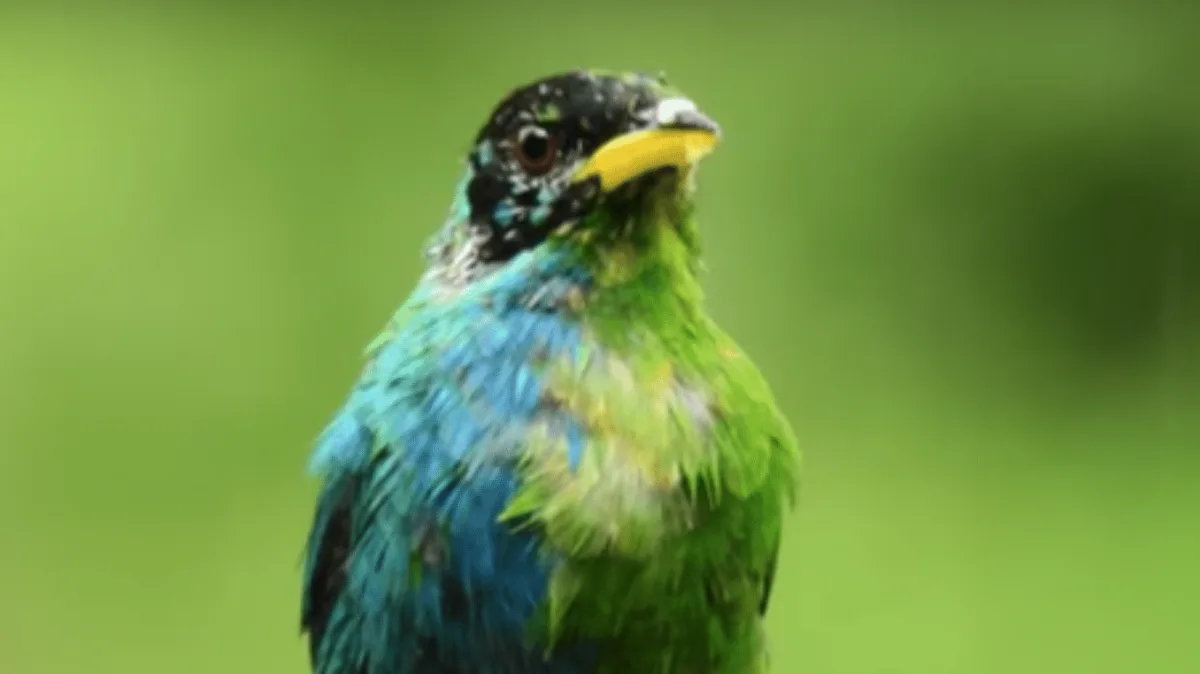The discovery of an extremely rare ‘half-female, half-male’ bird in Colombia has sparked significant interest in the scientific community and among bird enthusiasts worldwide. This bird, exhibiting a condition known as bilateral gynandromorphism, was recently captured on camera in the lush forests of Colombia, presenting a unique opportunity to study this rare phenomenon in avian species.
The Discovery
Bilateral gynandromorphism is a genetic condition where an animal possesses both male and female characteristics, split down the middle of its body. In birds, this often results in a striking appearance where one side of the bird displays the plumage and physical characteristics typical of a male, while the other side shows those of a female. This rare condition is different from hermaphroditism, where an individual has both male and female reproductive organs. In gynandromorphs, the division is typically external and based on secondary sex characteristics.
The bird in question belongs to a species (the specific species was not disclosed in the initial reports) that is known for having distinctly different male and female plumages, making the gynandromorphism visually dramatic. One half of the bird sports the bright, bold colors typically associated with males of its species, while the other half displays the more subdued tones of a female. This creates a striking, almost mirror-image effect that is a rarity in nature.
The discovery was made by a team of researchers and birdwatchers in Colombia, a country known for its rich biodiversity and as a haven for a variety of bird species. The team was conducting a routine survey when they stumbled upon this extraordinary individual. The find is particularly exciting as it offers a rare glimpse into the genetic and developmental processes that can lead to such a condition in birds.
The Phenomenon
Gynandromorphism is believed to occur during the early stages of embryonic development. It can happen when there is an error during cell division, resulting in some cells having a male genetic makeup (ZZ in birds) and others having a female genetic makeup (ZW). This genetic mosaic leads to the development of physical characteristics of both sexes in a single individual. However, the exact mechanisms and triggers for this phenomenon are not fully understood, and such occurrences in the wild are rare and not often documented.
The implications of this discovery are significant for the understanding of avian biology and genetics. Researchers are particularly interested in how this condition affects the bird’s behavior, physiology, and reproductive capabilities. In many bird species, males and females have different roles, such as in mating rituals, territoriality, and parenting. How a gynandromorphic individual navigates these roles can provide insights into the flexibility and limitations of these behaviors.
Wildlife Diversity
Furthermore, this discovery highlights the incredible diversity and complexity of nature, particularly in ecosystems like those in Colombia. It underscores the importance of ongoing conservation efforts to protect these habitats and the myriad of species that inhabit them. The preservation of such ecosystems is crucial not only for the species themselves but also for the continued opportunity to make such astonishing discoveries and deepen our understanding of the natural world.
In conclusion, the capturing of a ‘half-female, half-male’ bird in Colombia is a remarkable event that has excited both the scientific community and the public. It opens up new avenues for research into avian biology and genetics and serves as a reminder of the wonders of nature and the importance of conserving the diverse ecosystems around the world.
Up next:
The World’s Most Dangerous Bird
Meet Africa’s Largest Bird: The Martial Eagle
Meet Alex the African Grey Parrot: Smartest Bird in The World
Join our Forum for free today!

- The Kleptomaniac Cat That Rules Houston - July 20, 2024
- Elephant Makes a Lifelong Friend at Sanctuary in Tennessee - July 14, 2024
- Evidence For World’s Oldest Fossilized Forest Discovered in New York - July 11, 2024

